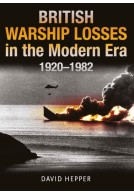The Archaeology of the Second World War (Paperback)
Uncovering Britain's Wartime Heritage
Imprint: Pen & Sword Archaeology
Pages: 160
Illustrations: 50 illustrations
ISBN: 9781399020831
Published: 27th May 2022
(click here for international delivery rates)
Order within the next 3 hours, 37 minutes to get your order processed the next working day!
Need a currency converter? Check XE.com for live rates
| Other formats available | Price |
|---|---|
| The Archaeology of the Second… ePub (24.8 MB) Add to Basket | £6.99 |
The Second World War transformed British society. Men, women and children inhabited the war in every area of their lives, from their clothing and food to schools, workplaces and wartime service. This transformation affected the landscapes, towns and cities as factories turned to war work, beaches were prepared as battlefields and agricultural land became airfields and army camps. Some of these changes were violent: houses were blasted into bombsites, burning aircraft tumbled out of the sky and the seas around Britain became a graveyard for sunken ships. Many physical signs of the war have survived – a vast array of sites and artefacts that archaeologists can explore - and Gabriel Moshenska's new book is an essential introduction to them.
He shows how archaeology can bring the ruins, relics and historic sites of the war to life, especially when it is combined with interviews and archival research in order to build up a clear picture of Britain and its people during the conflict. His work provides for the first time a broad and inclusive overview of the main themes of Second World War archaeology and a guide to many of the different types of sites in Britain. It will open up the subject for readers who have a general interest in the war and it will be necessary reading and reference for those who are already fascinated by wartime archaeology - they will find something new and unexpected within the wide range of sites featured in the book.
The author so poignantly reminds the reader that the ‘archaeology and the records of those remains will serve testimony to the wartime generation long after they have passed; the duty of archaeologists is to bring the traces of the Second World War to life again to illuminate the lives and experiences of the people who worked, fought and died among them’. The book will certainly aid that important process, and act as a wonderful aid for anyone fascinated in this archaeology.
Jon Sandison
This is a book to inspire local groups to research, reveal and record archaeology in their area. Warnings are given of possible unexploded ordinance, bad air and the chance of finding human remains where none are expected....
The Civil Defence Journa No.55 April 2016
This book has certainly encouraged me to ask questions of my older family members, before all we have left are only the discarded gas masks, the bricked-up air raid shelters and the distant memory of a worldwide fight for freedom. ... Oh, and you may just learn a new thing or too…I certainly did!
Historical Honey
What a brilliant idea it was to structure this introduction to Home Front archaeology around the people represented. This is an excellent introduction to what is both a first-rate hobby and an increasingly serious academic specialism. Hands-on contact with material can be electrifying for school-children, the wider public, and the older generation.
Military History Monthly
Such a supremely sensible and accessible book. An excellent introduction to what is both a first-rate hobby and an increasingly serious acedemic specialism.'
Military History Monthly
Many physical signs of the war have survived - a vast array of sites and artefacts that archaeologists can explore- and Gabriel Moshenska's book is an essential introduction to them.
Scale Military Modelling International
An engaging connection with the events of 1939-45.
British Archaeology
A broad and inclusive overview of the main themes of Second World War archaeology and a guide to many of the different types of sites in Britain. Find something new and unexpected within the wide range of sites featured in the book.
Loopholes- Journal for the Pillbox Study Group
With the possible exception of the castles built during the medieval period, few conflicts have made so great a mark on the British landscape as the Second World War. This book catalogues the extensive range of archaeological remains which, to this day, can still be found scattered across the country; including airfields, pillboxes, anti-aircraft positions, air raid shelters, crash sites, dockyards and prisoner of war camps. The background details of each are discussed in turn, with several key moments highlighted, accompanied by details of the various excavations which have taken place. The result is an inspiring introduction to a subject which really makes you want to wander off into the countryside and see what you can find for yourself.
Pegasus Archive
A welcome addition to the genre, this title offers a fascinating overview of aspects of the nation’s wartime heritage including Stop Lines and Air Raid Shelters, Schools in Wartime and Air Crash sites. Written in a classic style that will appeal to history novices, experienced researchers and those who read out of general interest, the title is well illustrated in colour and provides details of relevant places to visit.
Home Front History
Enjoyable, informative reading on a subject that has not hitherto been given the coverage it deserves.
About Gabriel Moshenska
Gabriel Moshenska received a PhD in the archaeology of the Second World War from the Institute of Archaeology, University College London. He conducts archaeological excavation and survey on First and Second World War sites in Greater London, as well as historical research on Civil Defence and the Home Front. His work has featured in television documentaries and a number of academic journals, books, newspapers and magazines. He is a member of the editorial advisory board for the magazine Military Times and he is the editor, with A. Myers, of Archaeologies of Internment and, with S. Dhanjal, of Community Archaeology.















